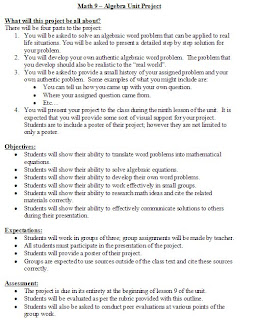Teaching objectives
To teach ‘equivalent fractions’ in a more ‘engaging’ manner.
Learning Objectives
The students will be able to recognize some fractions that have equivalent values.
Students will be able to add fractions with common denominators.
Students will have an opportunity to consider adding fractions with different denominators by first changing one or both fractions to equivalent fractions.
Bridge
Today we are doing jigsaws. But instead of pictures we are going to be using fractions.
Explain FREEZE including perhaps allowing which ever half of the class wins freeze most often, gets to leave first at the end of class.
Pretest
5 mins
Hand out sheet – 12ths, 6ths, already on. Ask students to complete outlines for 4ths, 3rds & halves and give an example on the whiteboard. They can then colour them in with pencil crayons not markers FREEZE –we would ask students to colour in the new bits that they have drawn on the sheets to make them feel more attached to it but you guys aren’t going to get that chance.
As they are drawing these, hand out the blocks. Put them loose on one table, in bags on another table with instructions not to touch and no blocks on the other tables. FREEZE you will notice that we have put some blocks on the tables. You need to consider very carefully when exactly you want the students to have access to manipulatives. See what’s happened here.
Once most of the students have finished drawing, ask them for their attention. Freeze – it is very hard to stop students doing something part way through so you may want to give both instructions 1 and 2 at the beginning. However, if you are stopping them, you may well want to do something like ask them to turn around to face you and fold their arms to reduce the temptation to carry on drawing while you are talking. If any of you here tonight draw while we’re talking you’ll get your knuckles rapped with a ruler!
Put a few simple fractions on the board and ask students to find some equivalent fractions, using blocks and fraction sheet to help, and ask them to put their hands up to offer their answers.
Activity
10 mins
We are going to do fraction jigsaws. You will each have a jigsaw of your own to complete but you can work together in groups of two or three if you wish. FREEZE - If the teacher continues talking now you will not have the attention of many of the students because they will be figuring out their groups of three. So either, say “You can collaborate in groups of two or three so let’s sort out those groups now and you can move to be close to the others in you group” OR don’t mention groups until you have explained everything else. There are also many ways to arrange groups so you may wish to employ a particular method in this situation in the classroom, but tonight you can just choose yourselves.
Please choose groups of three now and sit with your group.
The finished jigsaw will look like this (overhead of blank completed jigsaw)
Except each white space will have a fraction or a fraction sum on it.
Adjoining pieces must have the same value.
Use the sheet and blocks to help if you wish.
Please finish your drawings and then try to complete the jigsaw. You probably won’t complete it today but you will have time again next lesson (you may wish to number the pieces you have completed before you dismantle it at the end of this lesson)
Hand out jigsaws. Put student’s names on their baggies.
While the students are completing this activity, consider the following
Possible hints:
· Count the number of pieces in the puzzle. What will the dimensions of the finished jigsaw be?
· Some people find it easiest to complete the edges first.
Possible questions:
How did you start with this puzzle?
At what stage did it get hard?
How did you get through that block?
How could it be made harder?
Post test
Ongoing
The post test will be completed during the activity by observing individuals and groups as they are completing the jigsaw.
Resources
Sheet of squared paper with 12ths and 6ths marked on for each student.
15 rulers and pencils
15 sets of blocks in plastic bags (6, 4, 3, 2 cm)
15 jigsaws in plastic bags
Permanent marker.
Overhead projector
Image of blank completed jigsaw
Whiteboard pens
Summary
In addition to completing the jigsaws in the next lesson there are a number of possible extensions.
These include:
Asking students to create jigsaws of their own while considering these questions:
· Would it have been harder if the numbers did not have to be "the right way up"?
· What if the same answer occurred more than once?
· What if there were calculations on the outside edges, rather than grey?
· Can you make a harder (but still possible) puzzle?

